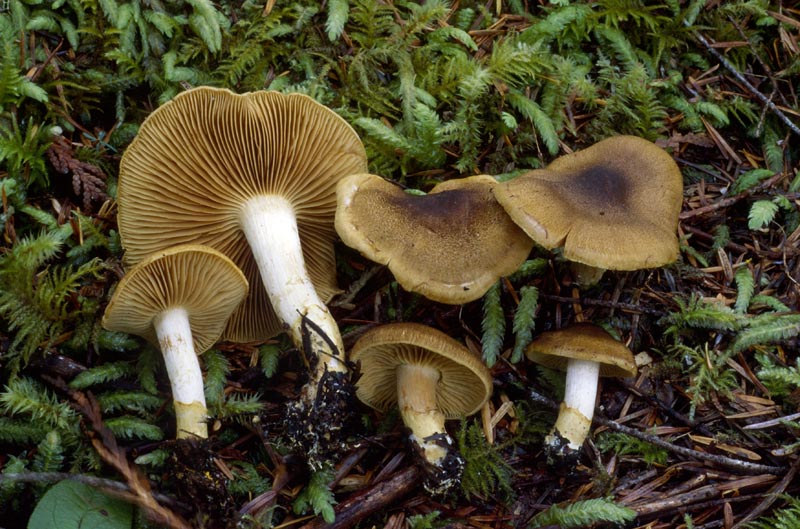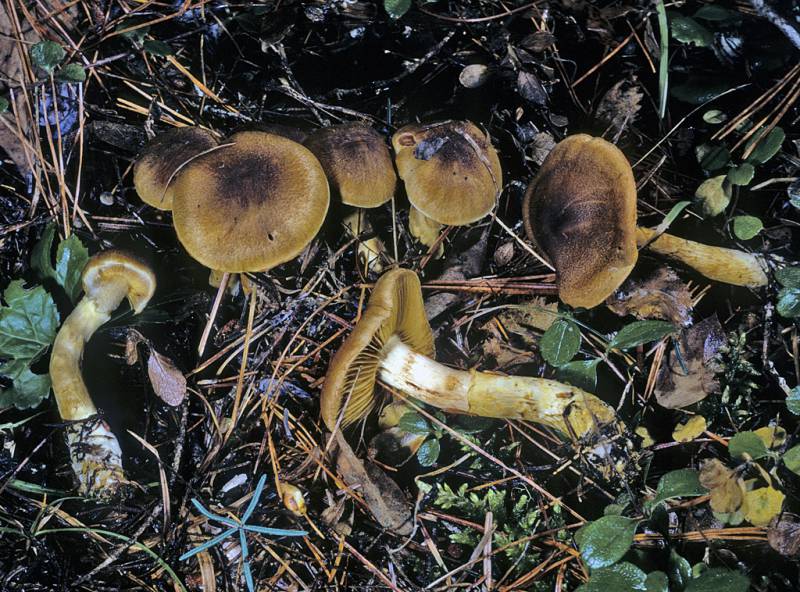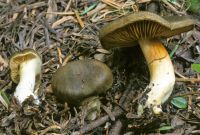Habitat: Western conifer forests, extending from lower elevations into the higher mountains
Conservation Status: Not of concern
Cortinarius clandestinus typically is medium-sized with thin and somewhat fragile flesh, and slender equal or slightly clavate stipe. The golden olive cap is dry and covered with dark brown to dark olive-brown, fibrillose scales, and the edge may be yellowish olive from veil fibrils at first. The flesh of the cap and stipe is yellowish to olive-yellow or somewhat darker when fresh, and usually has a radish odor. The gills are close, pale to yellowish or olive tinted, and become orange-brown when mature. The stipe typically is covered with light greenish yellow to yellowish veil fibrils and often has a slight ring-zone.
Sources: Trudell, Steve and Joe Ammirati. Mushrooms of the Pacific Northwest. Portland, Timber Press, Inc. 2009.
PNW Herbaria: Specimen records of Cortinarius clandestinus in the Consortium of Pacific Northwest Herbaria database
CalPhotos: Cortinarius clandestinus photos






